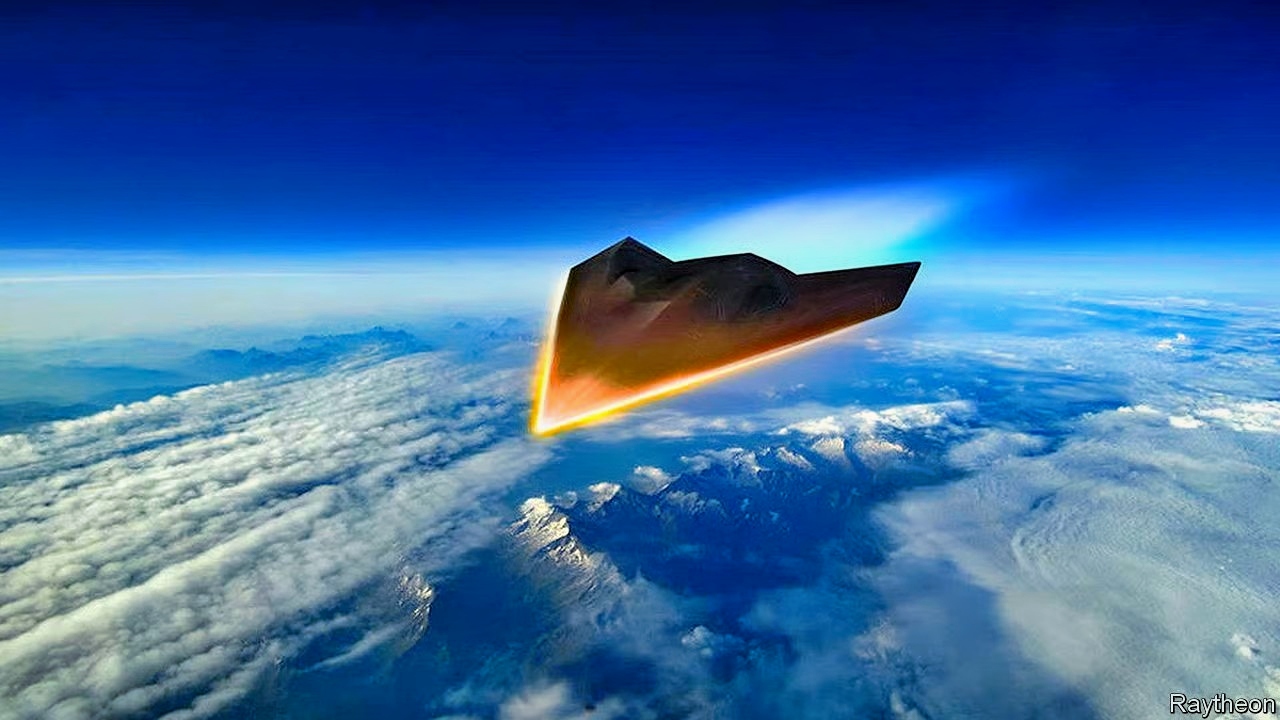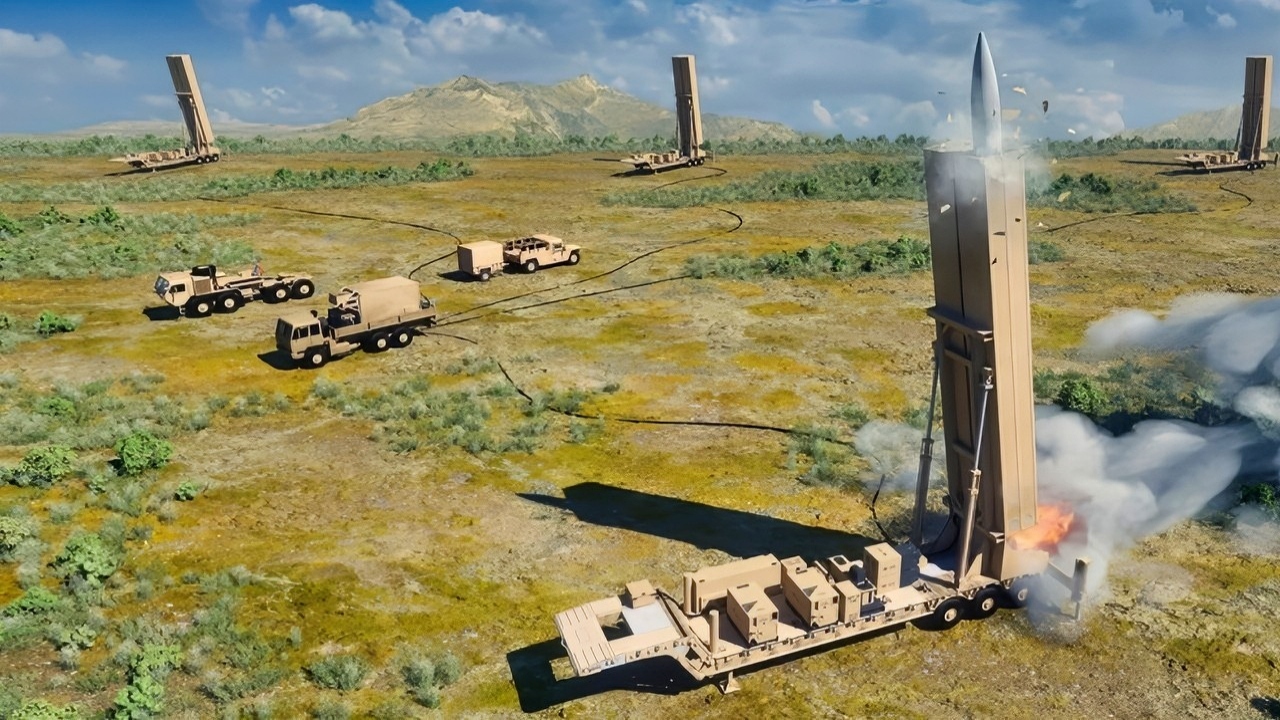Article Summary – The Dark Eagle Long-Range Hypersonic Weapon is the U.S. Army’s bid to break into the hypersonic strike game with a mobile, 1,725-mile-class “shoot-and-scoot” system built around a Common Hypersonic Glide Body shared with the Navy.
-Boosted by a two-stage solid rocket and fired from road-mobile launchers, Dark Eagle is designed to punch through anti-access/area denial networks, hit time-sensitive, high-value targets, and complement Navy Conventional Prompt Strike deployments.-After early test setbacks, successful end-to-end shots in 2024 revived the program, setting up initial fielding as China’s DF-17 and other hypersonic systems proliferate.

Mako Hypersonic Missile. Image Credit: Creative Commons.
What Is the Army’s Dark Eagle Hypersonic Missile System?
The Army’s Dark Eagle is the official name for its Long-Range Hypersonic Weapon (LRHW) system, which consists of a ground-launched hypersonic missile with a range of over 1,725 miles.
The Dark Eagle Hypersonic Missile System is designed to be highly mobile and maneuverable, capable of overwhelming enemy air defenses and striking time-critical targets at speeds greater than Mach 5. The system uses a Common Hypersonic Glide Body (C-HGB) and is equipped with mobile launchers for “shoot-and-scoot” tactics.
The Common-Hypersonic Glide Body (C-HGB) is a shared U.S. Army and Navy weapon component that is boosted by a rocket, then separates and glides to its target at hypersonic speeds (Mach 5+).
It is designed to be maneuverable, making it difficult to detect and intercept, and is based on previous Army programs. Dynetics, a subsidiary of Leidos, builds the prototypes, with the overall goal of creating a versatile glide body for both ground-launched and sea-launched missile systems.
The Army says the LRHW system provides the Army with a strategic attack weapon system to defeat Anti-Access/Area Denial (A2/AD) capabilities, suppress adversary long-range fires, and engage other high-payoff/time-critical targets.
The Army is working closely with the Navy in the development of the LRHW.
“It’s really a joint program. So it was myself, Mr. Stefany, the two three-stars and Lockheed working through, you know, finding out exactly what happened and then coming up at the same time with the new test schedule,” Assistant Secretary of the Army for Acquisition, Logistics and Technology Doug Bush said in an interview with Defense Scoop in December 2023.
“That’s gonna be several things in parallel. Fundamentally, there’s testing the launcher, which, frankly, is where the problems have been. Then there’s the missile itself, you know, the glide body and all that,” he added.

Hypersonic Missile. Image Credit: U.S. Military.
“So I think what we’re hoping to do is come up with a way to … not have to do everything in step function. We can simultaneously perhaps pursue some more aggressive missile tests to gain confidence with the missile, while doing some additional testing stuff we would normally do to find exactly what happened with the launcher itself.
“And then, when we have confidence in the launcher and the missile, then we’ll reschedule a kind of operational test where it’s, you know, all the real equipment. That was what we were trying to do in the last few tests, which didn’t go forward successfully.”
Key Characteristics of the Dark Eagle:
Lockheed Martin and Northrop Grumman are reportedly developing the LRHW’s missile component. When the hypersonic glide body is attached, it is referred to as the Navy-Army All Up Round plus Canister (AUR+C).
Northrop Grumman provides the booster for the LRHW missile, which is a common two-stage system that will also be used for the Navy’s Conventional Prompt Strike (CPS) system.
“We want to unlock the full capability of hypersonics. We can’t just create an initial capability and stop. We have to build on those successes and evolve next-generation capabilities that continue to define what is possible in hypersonics,” Nick Anderson, Northrop Grumman’s director of strategy and business development for propulsion systems & controls, said.
It combines the Navy-developed, two-stage missile booster with the Army’s Common Hypersonic Glide Body (C-HGB) and is stored and launched from a canister. This common system allows both the Army’s ground-based launchers and the Navy’s sea-based platforms to use the same missile.
The missile uses a two-stage solid-fuel booster to accelerate the C-HGB to hypersonic speeds. The C-HGB then separates and maneuvers toward its target.

Hypersonic Glide Vehicle. Image Credit: Raytheon.
The Dark Eagle’s Mobility:
The system is highly mobile, using road-mobile launchers on modified trailers to quickly reposition and fire from multiple locations. This “shoot-and-scoot” capability enhances survivability and complicates enemy targeting.
The LRHW system is organized into batteries. According to the Army, “a LRHW battery consists of four Transporter Erector Launchers (TELs) on modified M870A4 trailers, each equipped with two AUR+Cs (eight in total), one Battery Operations Center (BOC) for command and control, and a BOC support vehicle.”
In August, the Army sent the LRHW system to Australia for a large exercise, “Talisman Saber 25”.
Speed and Maneuverability:
Flying at speeds exceeding Mach 5, the missile is highly maneuverable, making it difficult for adversaries to intercept with conventional air defense systems.
The system is intended for use as a conventional strategic strike weapon to defeat anti-access/area denial capabilities, suppress enemy long-range fires, and engage other high-value targets. It has a reported range of over 1,725 miles (2,776 km).
A Dark Eagle battery includes four mobile launchers (each with two missile tubes), one command-and-control vehicle, and one support vehicle.
Development and Fielding:
The Army moved to formally designate the LRHW as Dark Eagle in April 2025, officially, and planned initial fielding to a first unit by the end of FY2025, while continued testing and additional batteries were scheduled through the mid-2020s. Additional operational testing and stockpiling will influence actual fielding timelines.
The program experienced early testing setbacks but conducted successful end-to-end flight tests in mid-2024 and December 2024.
China has deployed and tested hypersonic glide vehicles and road-mobile systems, such as the DF-17/DF-ZF family, which typically glide at Mach 5–10 and are designed to complicate and defeat missile defense engagements.
About the Author: Steve Balestrieri
Steve Balestrieri is a National Security Columnist. He served as a US Army Special Forces NCO and Warrant Officer. In addition to writing on defense, he covers the NFL for PatsFans.com and is a member of the Pro Football Writers of America (PFWA). His work was regularly featured in many military publications.











Jim
November 24, 2025 at 1:51 pm
Getting the Dark Eagle in the field is a milestone and puts the U. S. in the hypersonic club.
Part of having the system is also the crucial task of exploring the possibility of anti-hypersonic defense systems.
We don’t know as of yet the feasibility of such systems.
But we have to do our best to find out.
Meanwhile, the faster the better to the target.
Shitpile
November 24, 2025 at 3:02 pm
The dark eagle or LRHW and other weapons like the PrSM and the typhon, and the advanced longer-range HIMARS are LIKE big dark cliuds.
But the real killer drilker weapon to be truly feared is the LRSO.
The LRSSO has been conjured up by DoD to Finish off china. Nothing else.
Thus china must keep tabs on the progress of this weapon.